Legged sofas: variety of types and examples in the interior
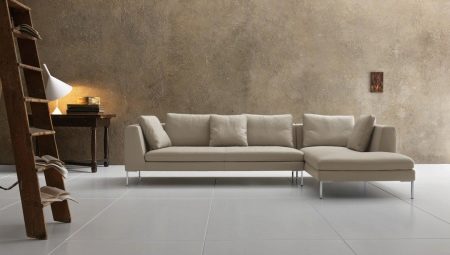
Legged sofas are considered practical and reliable pieces of furniture. They are easier to move to location, and dust and dirt are easier to clean underneath. However, not all types of supports are created equal. The material in this article will help you understand the features and types of sofas with legs, and also tell you what to look for when choosing the option you like.
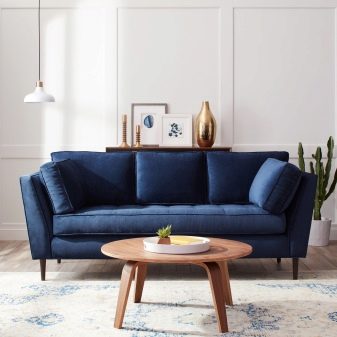

Peculiarities
Legged sofas can be very diverse. Wherein the type of supports may differ not only in shape, but also in height... Supporting elements of structures give it stability, and also decorate the product. Often they are a tool for accentuating a particular interior style. For this reason, the choice of such products has to be approached thoroughly.
Thanks to the supports, when transporting the sofa from place to place, the upholstery material on the underside of the structures does not wear out. The sofa legs provide the necessary support and are responsible for the safety of the product. They are by no means universal: the supporting elements are selected in accordance with the weight ratio with the structure.
Moreover, the best of them have an anti-friction and non-abrasive coating.
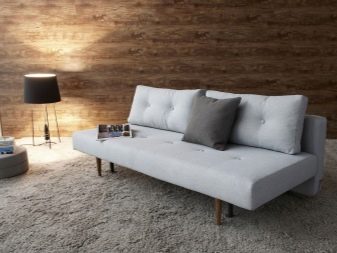
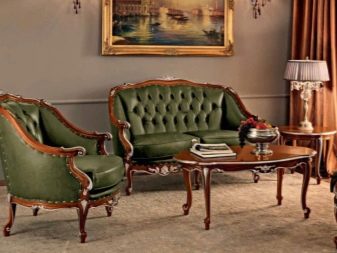
Varieties
Today, trade marks present to buyers a wide range of upholstered furniture designs that amaze even the most discerning buyers. Products differ in shape, type of transformation mechanism, size, functionality and degree of convenience for users. The market assortment can be classified according to several criteria.
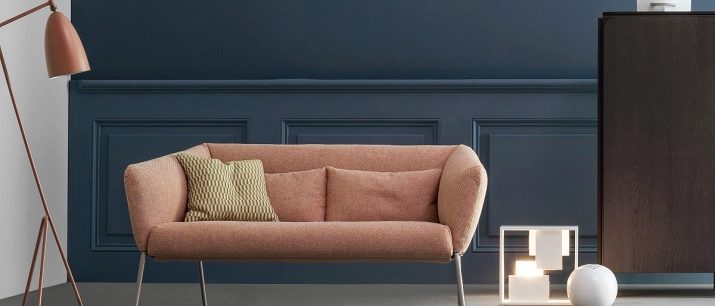
For example, the lineup is divided into products with and without armrests. Options of the first type can be hard and soft, thin and voluminous, standard and functional. Often, these items are equipped with countertops and internal storage systems. In addition, armrests can also be organizers for sofas, making up a set of a table and poufs located under it.
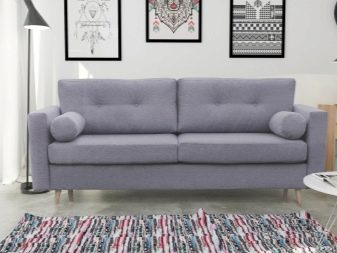
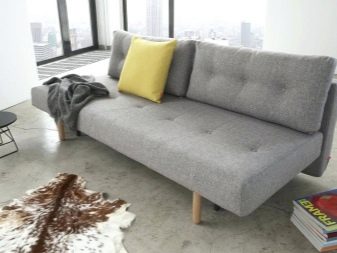
By form
All known types of sofas with legs are divided into 5 types, at the same time, products of each group have their own characteristics.
- Straight sofas They are characterized by a linear shape, suitable for placement along walls and in the center of rooms, complemented by cozy armchairs. They can have different configurations and heights of the backs; in the presence of expensive upholstery, they look solid and impressive in the interior.
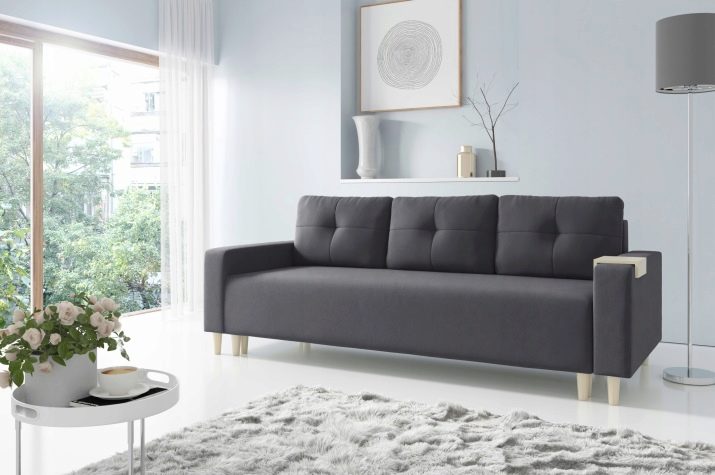
- Corner - are divided into 2 large groups: L-shaped and U-shaped. Both are capable of zoning space, denoting the boundaries of a specific functional area. Their appearance can be different, corner elements can be poufs, ottomans, minibars, tables.

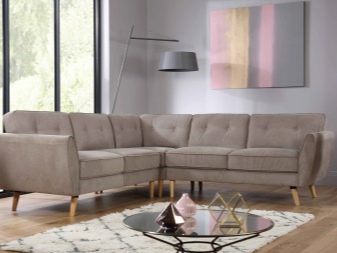
- Radius models on the legs there are nothing more than rounded sofas. They are installed mainly in the center of the room, creating a cozy guest area. These modifications are large in size and with varying levels of functionality, usually soft and bulky.
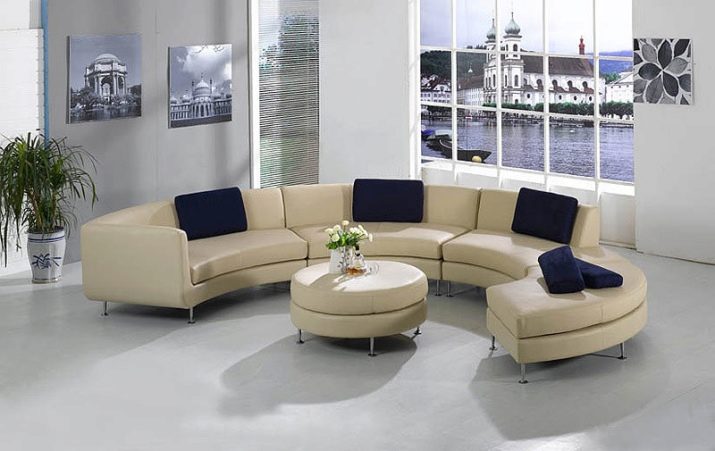
- Round analogs on legs are transformer models. When assembled, they are in the shape of a semicircle, complemented by backs of different configurations, but rarely equipped with armrests. As they unfold, they turn into a circle, while the number of blocks that form a berth may vary.
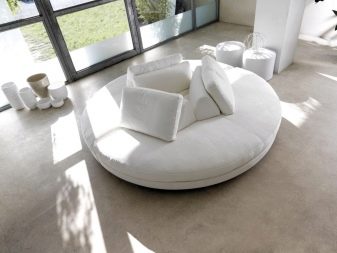
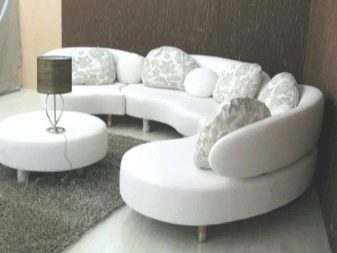
- Modular sofas on legs consist of a set of upholstered furniture or individual sections. They are assembled at their own discretion, ordering the seller to assemble the resulting model. In addition, products can be sold without rigid fixation, which allows you to vary the design model as you wish.

By type of construction
According to the type of construction, modifications are divided into stationary and transformable models. Products of the first type do not provide for unfolding, however, they can be equipped with built-in storage systems. They are bought for seating, equipping them with small rooms in their home.
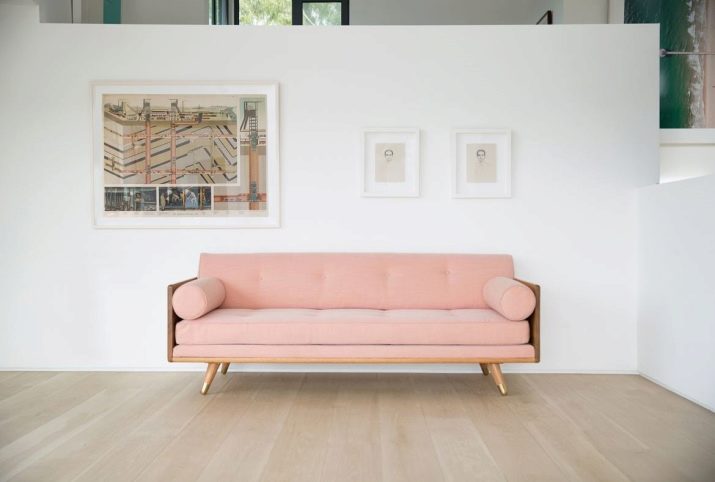
Such furniture can be completely miniature, which allows you to place mini-models on glazed gazebos, loggias and balconies.
Analogues with transformation mechanisms have a berth. As it unfolds, such a sofa turns into a full-fledged bed, and sometimes even an orthopedic one, since it is supplied with an orthopedic mattress. Other designs are designed only for the comfort of the user, and therefore do not have an optimally rigid base, they are as large as possible, they are modular, sectional and even bay window.

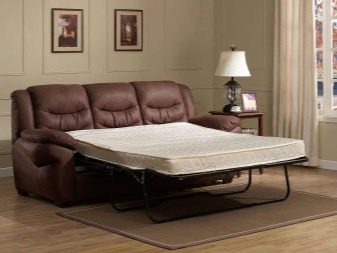
Mechanisms for transforming sofas are folding, retractable, roll-out, lifting, swivel, folding.
Folding sofas with legs are more comfortable in comparison with analogs without supports. Thanks to the support elements, the back of the upholstery material is preserved. A transforming sofa can combine the functions of a sofa, bed, table, cabinet.
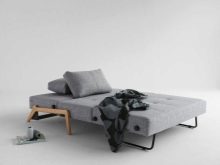
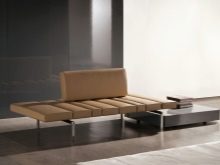
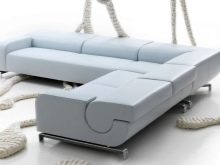
What are the legs?
Supporting elements of structures are different. By the type of execution, they can be stationary and adjustable. Products of the second group are considered universal supporting mechanisms, since they allow you to level furniture even on an uneven base. The adjustable element is a screw mechanism, it is easy to operate.
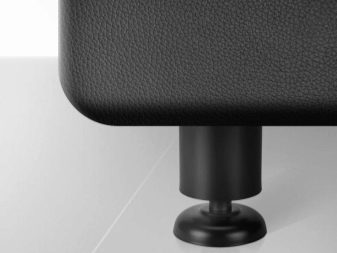

Besides, supports of sofas can be roller. In fact, these are elements in the form of wheels that increase the mobility of structures, and also prevent damage to the floor covering. Roller legs are responsible for the quiet movement of the sofa, resistance to significant mechanical stress. According to the type of execution, they are rotary and linear, according to the support unit - bearing and sleeve, according to the type of placement - external and hidden.
By design, the supporting elements are strictly functional and functional and decorative.
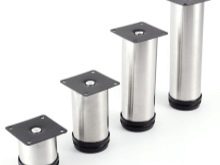
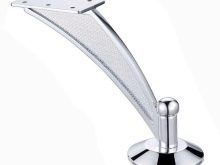

By the type of material of manufacture - wood and metal. In this case, metal options can be chrome-plated or anodized.

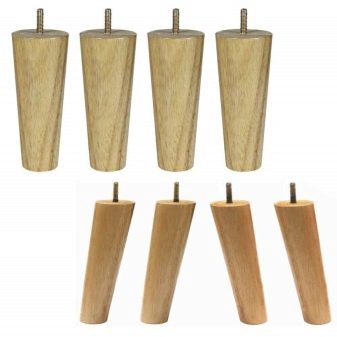
In terms of the height and shape of the legs, sofas can be on high, low, thin, wide, rectangular, conical supports.
At the same time, long and carved legs are made of wood.
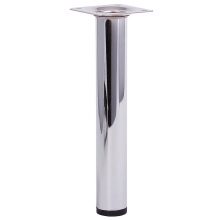
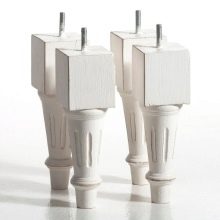
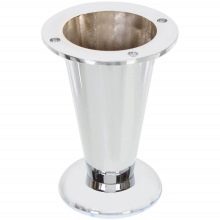
Materials (edit)
Different raw materials are used in the production of upholstered furniture. The frame of sofas is made of wood (oak, beech, birch) and metal (steel and aluminum). In addition to the wood itself, products of its processing (plywood, MDF and chipboard) are often used in production. As a filler, polyurethane foam, synthetic fluff, and a spring block are used. In this case, the type of berth can be made from a combination of springless and spring-loaded material.
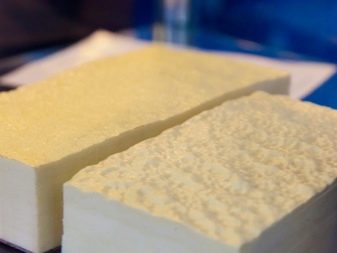
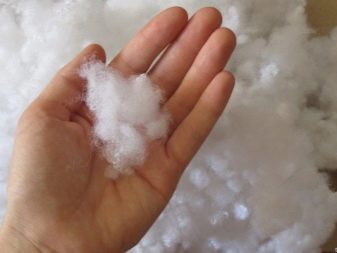
Sofas are sheathed with natural and artificial leather, in addition to them, textiles are used in the production of upholstered furniture: flock, furniture tapestry, velor, jacquard, velvet, chenille.
The best type of textile upholstery is flock. It is a vandal-proof coating that is resistant to pet claws, abrasion and moisture.
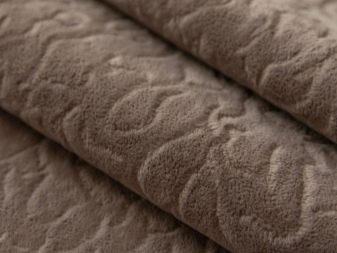

Supports for sofas are wooden, metal (iron, reinforced concrete, cast iron). Depending on this, they may or may not have a chrome plating.
Dimensions (edit)
The dimensions of the sofas with legs may vary. Small-sized models, designed for 1 person, can be about 1-1.5 m when assembled. Others look like a chair-bed, differing in a folding forward transformation mechanism. The sleeping place for such products is on average 1.5 m (for children's models) and 1.8 m (for products for adults).

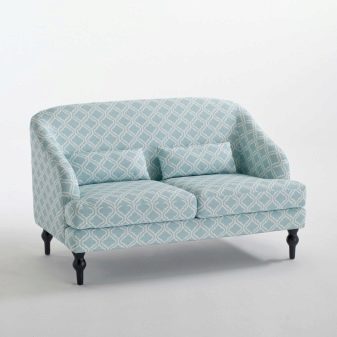
Small sofas can have narrow seats with an average depth of 45 cm. Other modifications are more comfortable, their seat depth is 60-80 cm with a width of 1.2-1.5 m. The dimensions of the berth for double and triple analogs are more than 2 m. stationary structures is about 2 m.
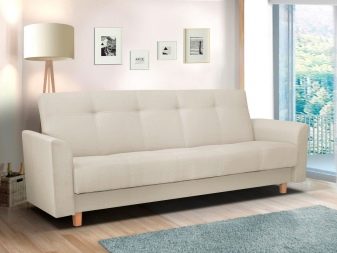
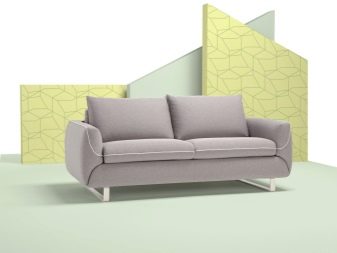
The standard height from floor to seat is 45 cm. Backrest heights may vary. Tall models often reach 1-1.15 m, low furniture is about 70-80 cm in height from the floor to the edge of the back. The height of the supporting elements can be different. The thickness of the armrests varies from 10 to 25 cm, with some varieties it is larger.
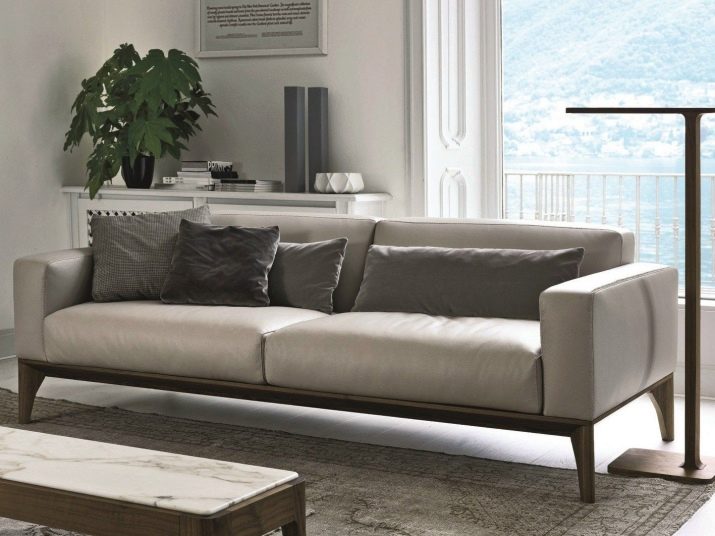
Styles and colors
The color of the sofa for furnishing the interior can be different, but at the same time it is selected based on the background solution and the shade of the existing furniture for a particular room in the dwelling. Today, fashionable shades of sofas are considered beige, creamy, light gray, pistachio, graphite and brown.
Models in turquoise, wine and orange will become bright accents of the interior.

The most fashionable are several design directions, such as hi-tech, modern, loft, chalet, brutalism, art deco, minimalism and Scandinavian style. Sofas, created in different styles, differ in shape and color, but they also have common features: in most cases, they have a plain upholstery with a pleasant texture, and also differ in medium and low legs. Most of them are covered with chrome plating. Models of the classic style are distinguished by rich decor and carvings of the supporting elements.
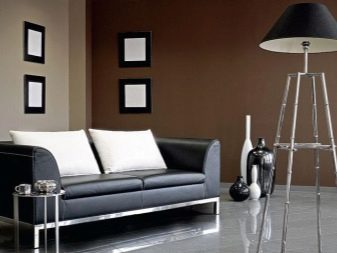
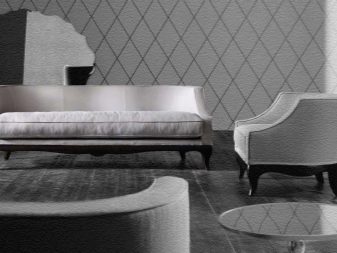
How to choose?
When choosing a sofa with legs, you need to pay attention to several nuances:
- seat depth, backrest height and tilt, seating comfort;
- functionality - the presence of a bed and boxes for linen;
- practicality of the transformation mechanism (for expandable models);
- the presence of soft pads on the legs, extending their service life;
- reliability and durability of the material for the manufacture of supporting legs;
- design of the structure, its shape, matching to existing furniture;
- color scheme and type of texture, choosing according to the interior design of a particular room;
- the dimensions of the sofa, taking into account the dimensions of a particular room;
- reputation of the seller, quality of frame and upholstery materials.
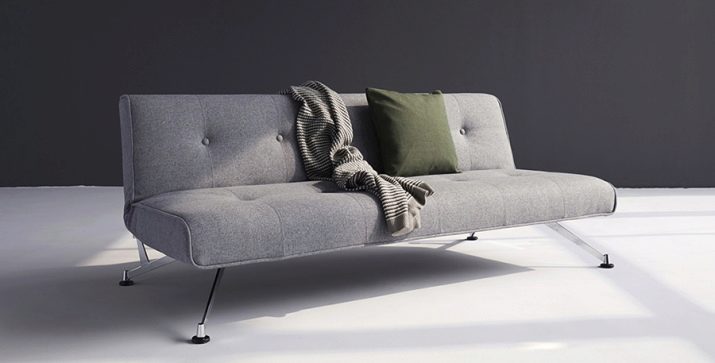
In addition, the style of the interior is also important. You need to buy a sofa taking into account the chosen style in which a particular room is being set up.
Beautiful examples in the interior
We offer 10 stylish ideas for decorating the interior with a beautiful and functional sofa with legs.
- An example of choosing a modular sofa with pillows for arranging a guest area.
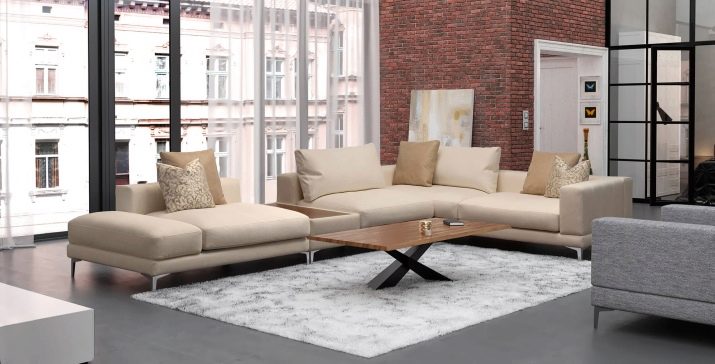
- A sofa with wooden armrests and strong legs. The product is a key element of the living room.
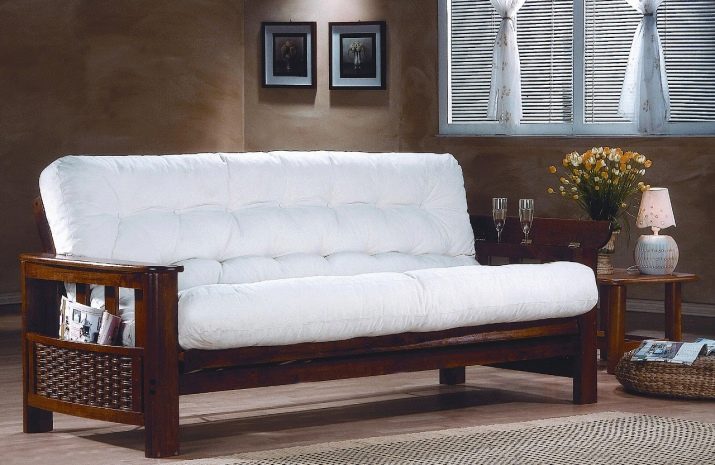
- Model in a modern style. Used for open space zoning.
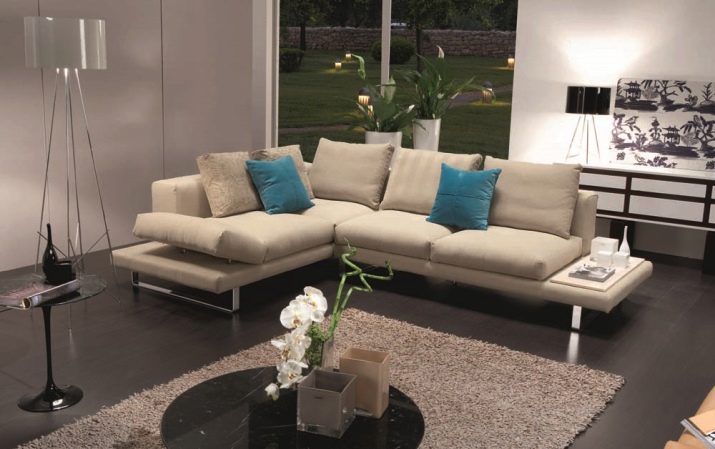
- A sofa with rounded sides and gold legs as an expressive accent in the living room.
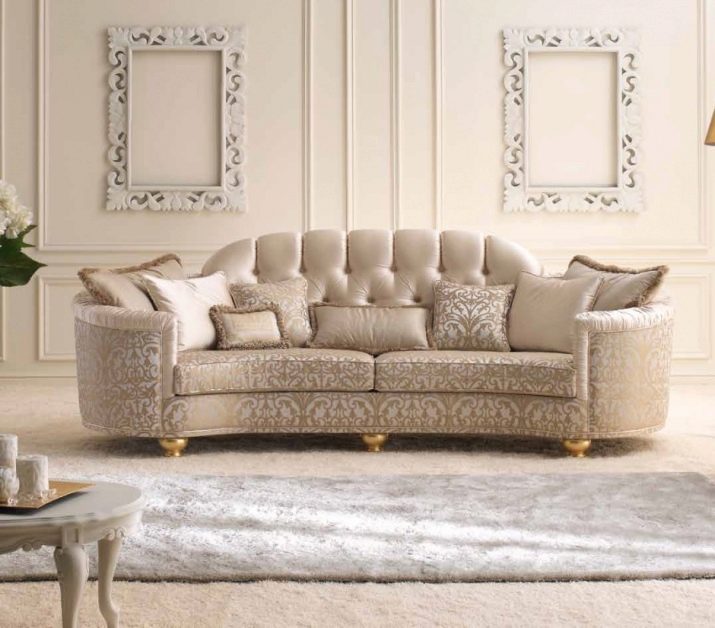
- Leather sofas with seat and back cushions that outline the boundaries of the guest area.
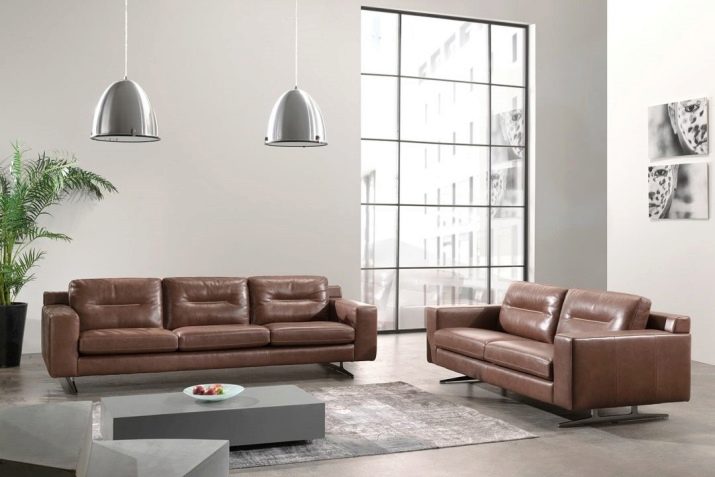
- The choice of a sofa with decorated legs and armrests for arranging a bright room.
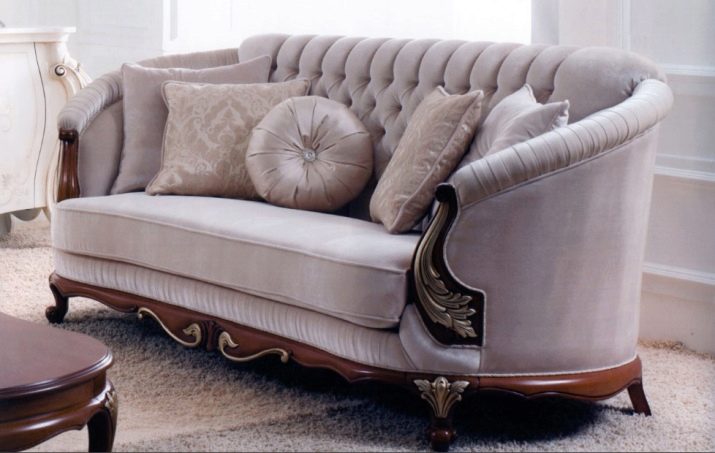
- A couch with a carriage coupler and curly legs, chosen to create a cozy atmosphere in a country house.
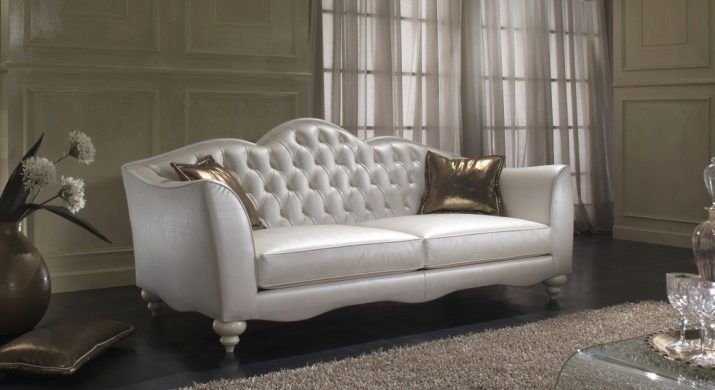
- Decorating the guest space with compact furniture on wooden legs.
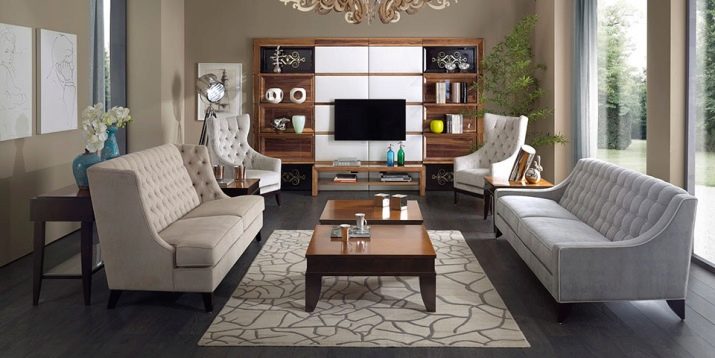
- Modular furniture in an open-plan home interior. Choosing a sofa for a country house.
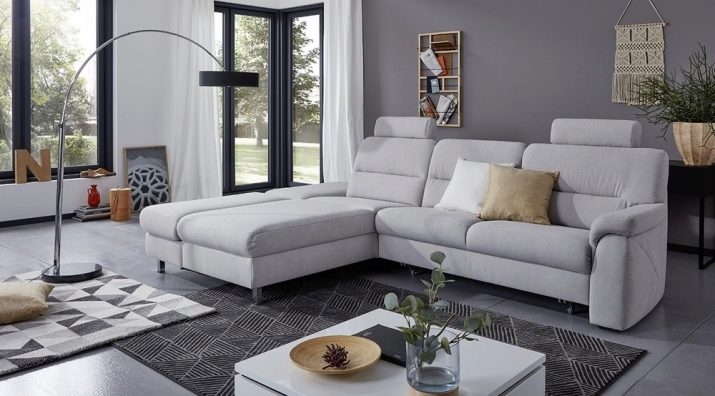
- A sofa with decorative cushions and white legs, chosen to decorate a bright living room.
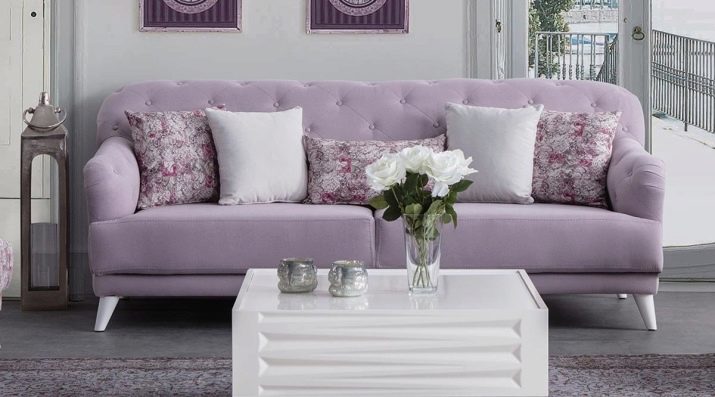
An overview of the sofa on high legs with a berth further.








